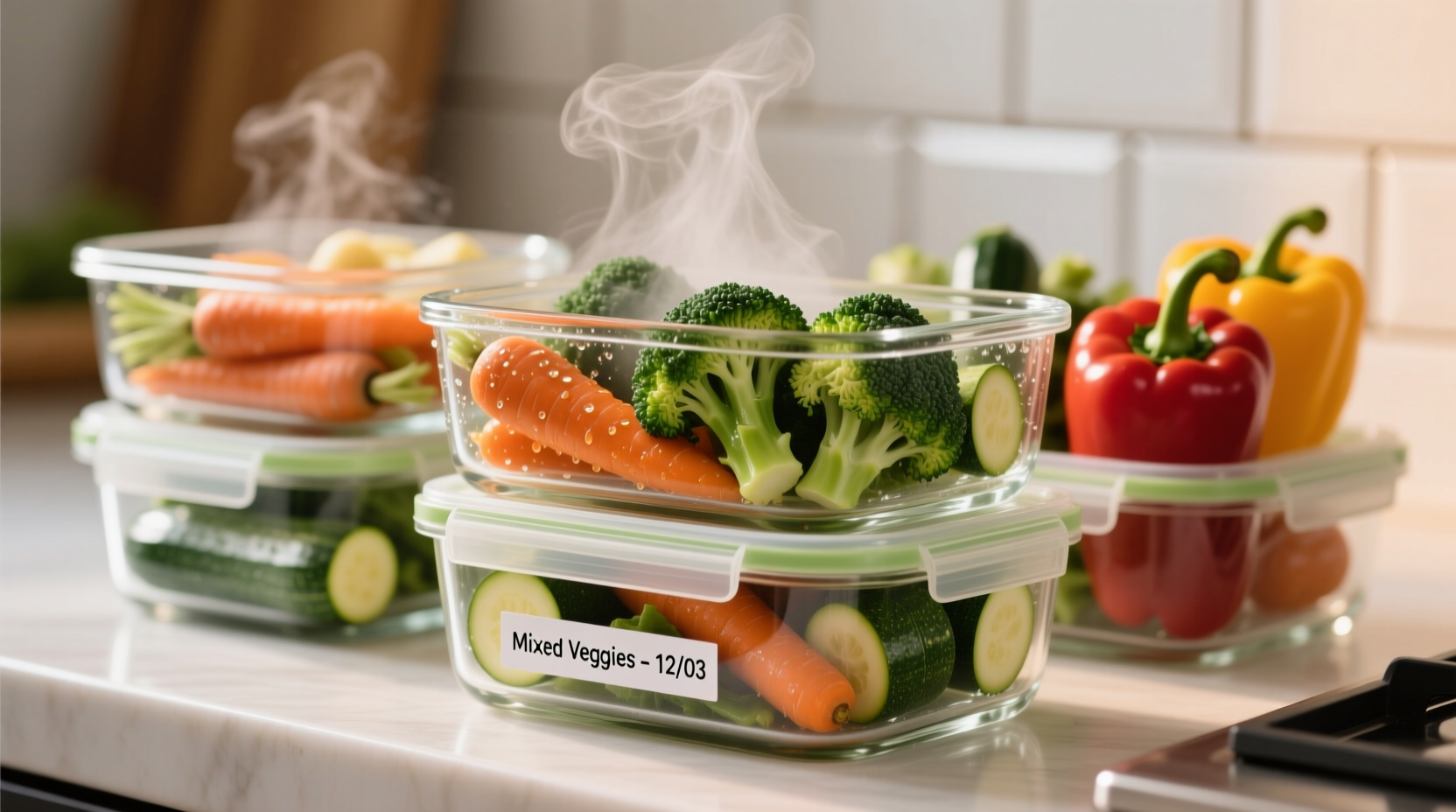Ever wonder whether those leftover roasted carrots or steamed broccoli are still safe to eat? You're not alone. Millions of home cooks face this question daily, trying to balance food safety with reducing kitchen waste. Getting this right matters more than you might think - improper storage of cooked vegetables accounts for nearly 12% of all reported foodborne illness cases according to the Centers for Disease Control and Prevention.
Why Proper Storage Timing Matters for Your Health
When vegetables cook, their natural protective barriers break down, creating an ideal environment for bacteria like Salmonella and Listeria to multiply. These pathogens don't always change how food looks or smells, making visual inspection unreliable. The 3-5 day window isn't arbitrary - it's based on extensive research into bacterial growth rates at standard refrigerator temperatures.
What Affects Cooked Vegetable Shelf Life?
Several critical factors determine exactly how long your specific leftovers will remain safe:
- Initial cooking temperature - Properly cooked vegetables (reaching 165°F/74°C) have fewer surviving bacteria
- Cooling speed - Rapid cooling to below 70°F within 2 hours prevents "danger zone" proliferation
- Storage container - Airtight containers minimize moisture loss and contamination
- Refrigerator temperature - Consistent 40°F (4°C) or below is essential
- Vegetable type - Different vegetables have varying pH levels and moisture content
Vegetable-Specific Storage Guidelines
Not all cooked vegetables last equally long. This comparison shows how different types perform under proper refrigeration:
| Vegetable Type | Maximum Safe Storage | Special Considerations |
|---|---|---|
| Leafy greens (spinach, kale) | 3-4 days | High moisture content accelerates spoilage |
| Cruciferous (broccoli, cauliflower) | 4-5 days | Strong odor may develop before spoilage |
| Root vegetables (carrots, potatoes) | 5-7 days | Denser structure provides longer stability |
| Squash and zucchini | 3-4 days | High water content requires careful storage |
| Legumes (beans, lentils) | 5-6 days | Protein content supports longer stability |
This data aligns with current recommendations from the USDA Food Safety and Inspection Service, which emphasizes that dense vegetables generally maintain safety longer than high-moisture varieties.
Proper Storage Techniques That Extend Freshness
Following these evidence-based methods can help you maximize both safety and quality:
- Cool rapidly - Spread cooked vegetables in a thin layer on a baking sheet before refrigerating
- Use proper containers - Glass or BPA-free plastic with tight-fitting lids maintain optimal humidity
- Store correctly - Place in the main compartment (not the door) where temperature is most consistent
- Label everything - Note cooking date with marker directly on container
- Maintain temperature - Verify your refrigerator stays at 40°F (4°C) or below using a thermometer
When in Doubt: Recognizing Spoilage Signs
While the 3-5 day rule provides a safety baseline, always check for these spoilage indicators before consuming:
- Visual changes - Unusual discoloration, mold growth, or slimy film
- Odor changes - Sour, fermented, or unpleasant smells
- Texture changes - Excessive mushiness or sliminess
- Taste changes - Sour or off flavors (only test if other signs are absent)
Remember: "When in doubt, throw it out" remains the golden rule of food safety. The FDA Food Code explicitly states that potentially hazardous foods showing any spoilage signs should be discarded immediately.
Special Considerations for Vulnerable Populations
Certain groups face higher risks from improperly stored food. If you're preparing for:
- Infants or young children
- Older adults (65+)
- Immunocompromised individuals
- Pregnant women
Consider reducing the standard storage window to 2-3 days. The National Center for Home Food Preservation notes that vulnerable populations have significantly lower thresholds for foodborne pathogens.
Common Questions About Cooked Vegetable Storage
Understanding these frequently asked questions can help you make better decisions about your leftovers:

Freezing as an Alternative Preservation Method
When you can't consume cooked vegetables within 3-5 days, freezing provides a safe alternative. Properly frozen cooked vegetables maintain quality for 8-12 months. Key steps include:
- Cool completely before freezing
- Use freezer-safe containers with minimal air space
- Label with contents and date
- Thaw in refrigerator, not at room temperature
The freezing process effectively stops bacterial growth, making it an excellent option for preserving seasonal vegetable harvests or meal prepping. Just remember that texture may change slightly upon thawing, particularly for high-moisture vegetables like zucchini.











 浙公网安备
33010002000092号
浙公网安备
33010002000092号 浙B2-20120091-4
浙B2-20120091-4